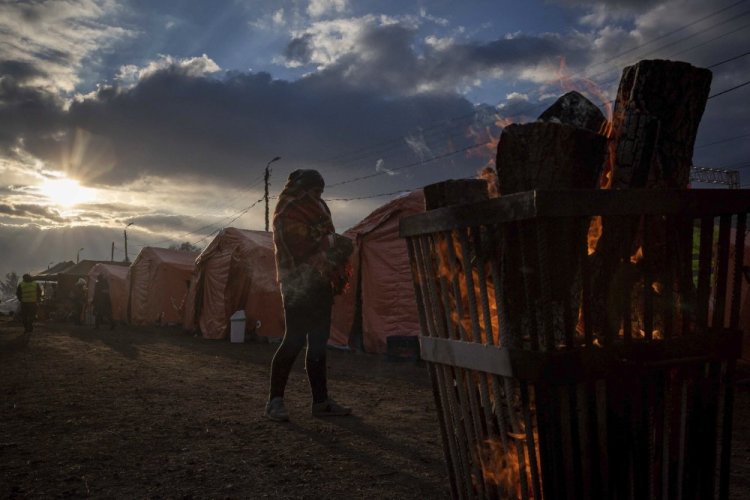Russia’s missile attack on a Ukrainian military base near the Polish border was launched from long-range bombers flying inside Russian airspace, the Pentagon said Monday, detailing its latest assessment of the strike that killed at least 35 people and marked a significant escalation in the nearly three-week war.
The attack Sunday in Yavoriv in western Ukraine, about 15 miles from NATO territory, did not disrupt shipments of Western military aid, despite Russia’s claims to the contrary, said a senior U.S. defense official, speaking on the condition of anonymity under ground rules set by the Pentagon.
But it has amplified fears in the region, and in the United States, that a miscalculation could drastically widen the war. Thousands of U.S. troops have been sent to Poland and other country’s along the alliance’s eastern edge, and President Biden and other Western leaders have maintained that a Russian attack on one would invite a ferocious response.
The senior U.S. defense official said Russia’s fusillade targeting the International Peacekeeping and Security Center has not altered the U.S. force posture in Poland. The official said that “more than a couple dozen” missiles were launched.
The facility has been used in the past by U.S. and NATO troops to provide training for the Ukrainian military, and currently houses about 1,000 foreign volunteers who have traveled to Ukraine to aid in its war with Russia. The senior defense official said the Pentagon would “not have a way of knowing or tracking” whether any American citizens were among those killed or wounded in the attack, though he affirmed earlier statements indicating that no U.S. troops, government officials or defense contractors were at Yavoriv when the strike occurred.
The facility is not a transit point for Western military aid, the senior U.S. defense official said, contradicting Russian Defense Ministry claims the base was used as a weapons and equipment depot. Russian officials have warned that they consider weapons shipments “legitimate targets.” U.S. and European officials have not disclosed any shipment routes into Ukraine, so it is unclear whether the facility had been a hub for weapons in the past.
“I would just tell you that we have multiple routes to get security assistance into the hands of the Ukrainians,” Pentagon spokesman John Kirby told reporters during a news briefing Monday afternoon. “This was not one of them.”
That the attack originated in Russian airspace underscored the limitations of enforcing a no-fly zone in Ukraine, the senior defense official said. The Biden administration has refused repeated pleas from Ukraine’s president, Volodymyr Zelensky, and some U.S. lawmakers who support using American warplanes to police the airspace. Others in Congress concur with the Pentagon’s assessment that such an operation would risk a direct confrontation between U.S. and Russian aircraft.
“A no-fly zone would not stop all of the air activity,” the senior defense official said Monday. “It would engender U.S. pilots in combat with Russia.”
Western Ukraine and its major city of Lviv has become a transit point for civilians fleeing the war elsewhere in the country, but recent strikes have shattered the notion that the area will remain a refuge from attacks.
“This is the third now military facility or airfield that the Russians have struck in western Ukraine in just the last couple of days,” Kirby said Sunday. “So clearly, at least from an airstrike perspective, they’re broadening their target sets.”
Send questions/comments to the editors.



Comments are no longer available on this story